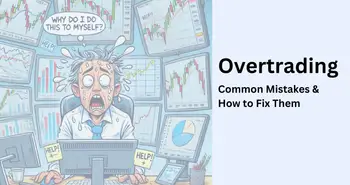Understanding Pattern Day Trading Rules: A Comprehensive Guide

If you're new to the world of day trading, understanding the rules and regulations surrounding pattern day trading is crucial. The Securities and Exchange Commission (SEC) has put in place specific guidelines to protect investors and maintain market fairness. In this comprehensive guide, we will delve deep into pattern day trading rules and explore its nuances to ensure that you have all the information you need to navigate this exciting and potentially lucrative field.
Defining Pattern Day Trading
Before we dive into the specifics, let's start with the basics. Pattern day trading refers to the practice of buying and selling stocks or other securities within the same trading day. This allows traders to take advantage of short-term price fluctuations, potentially turning a profit in a matter of hours or even minutes.
Pattern day trading is a strategy employed by active traders looking to capitalize on intraday market movements. By executing trades within the same day, these traders aim to profit from short-term price changes rather than holding positions overnight. This fast-paced style of trading requires quick decision-making and a deep understanding of market trends.
The Basics of Pattern Day Trading
Pattern day trading is governed by certain key terms that traders should familiarize themselves with. Terms like “round trip,” which refers to the process of both buying and selling a security within the same trading day, and “margin account,” which is required for day trading, are essential to understanding how pattern day trading rules work.
Understanding the concept of a “round trip” is crucial for day traders, as it signifies the completion of a full trade cycle within a single trading session. This term is used to calculate the number of day trades a trader has executed and plays a significant role in determining their pattern day trading status. Additionally, maintaining a margin account is a fundamental requirement for day trading, as it provides traders with leverage to amplify their buying power and potentially increase their profits.
Key Terms in Pattern Day Trading
It's important to familiarize yourself with key terms in pattern day trading to avoid any confusion or misunderstandings. For example, the “rule of four” states that if a trader executes four or more day trades within a rolling five-day period, they will be classified as a pattern day trader. Additionally, a margin account, which allows traders to borrow money from their broker to trade, is necessary for day trading.
Another critical term to grasp in pattern day trading is “day trade buying power,” which represents the maximum amount a trader can invest in day trades without triggering a margin call. Understanding this concept is essential for managing risk and ensuring compliance with regulatory requirements. By familiarizing yourself with these key terms and principles, you can navigate the world of pattern day trading with confidence and precision.
The Importance of Pattern Day Trading Rules
Pattern day trading rules are in place to ensure market fairness and protect both individual traders and the overall integrity of the market. By enforcing these rules, regulators aim to prevent excessive speculation and market manipulation.
Understanding the intricacies of pattern day trading rules is crucial for any trader looking to navigate the fast-paced world of day trading. These rules are designed to create a more level playing field in the market, ensuring that all participants have an equal opportunity to succeed.
Ensuring Market Fairness
Pattern day trading rules help maintain a level playing field for all market participants. By requiring traders to adhere to certain guidelines, these rules help to promote fair and transparent trading practices.
Market fairness is essential for fostering trust and confidence among traders. When everyone plays by the same rules, it creates a more stable and predictable trading environment, benefiting both seasoned professionals and novice traders alike.
Minimizing Risk in Trading
Day trading can be an exciting yet risky endeavor. Pattern day trading rules help minimize risk by setting limits on the number of trades a trader can make in a given period. This helps prevent traders from overextending themselves and potentially losing large sums of money.
By imposing restrictions on the frequency of trades, these rules encourage traders to approach day trading with a more strategic and disciplined mindset. This not only reduces the likelihood of impulsive and emotion-driven decisions but also promotes long-term sustainability in trading practices.
The Specifics of Pattern Day Trading Rules
Now let's dive into the specifics of pattern day trading rules to better understand how they work and the implications for traders.
The Rule of Four
The rule of four is a key component of pattern day trading rules. If you execute four or more day trades within a five-day rolling period, you will be classified as a pattern day trader. Once classified as a pattern day trader, specific requirements and restrictions come into play.
Minimum Equity Requirement
Pattern day traders are required to maintain a minimum equity balance of $25,000 in their margin account. This requirement aims to ensure that traders have sufficient funds to cover potential losses and mitigate the risk of defaulting on the borrowed money.
Margin Account Necessity
To engage in pattern day trading, traders must have a margin account. This type of account allows traders to borrow money from their broker to trade. However, it's important to understand the risks associated with margin trading and use leverage responsibly.
Consequences of Violating Pattern Day Trading Rules
It's essential to adhere to pattern day trading rules to avoid potentially severe consequences.
Potential Penalties
If you violate pattern day trading rules, your account may be flagged as a pattern day trader. This could lead to restrictions, such as a freeze on your account or limitations on trading activity. In some cases, repeated violations can result in permanent account suspension.
Impact on Trading Account
Violating pattern day trading rules can have a significant impact on your trading account. Restricted access to funds or the inability to execute trades freely can hinder your ability to seize market opportunities and potentially result in missed profits.
Strategies for Complying with Pattern Day Trading Rules
Complying with pattern day trading rules doesn't have to be a daunting task. By employing effective strategies, you can navigate these regulations while still pursuing your trading goals.
Effective Planning for Trades
Plan your trades in advance and stick to your strategy. By carefully considering your entry and exit points, as well as setting realistic profit targets and stop-loss levels, you can make informed decisions and minimize the temptation to engage in excessive day trading.
Maintaining Adequate Equity
To comply with pattern day trading rules, maintain a sufficient equity balance in your account. By ensuring you have at least $25,000 in your margin account, you can avoid triggering restrictions and continue trading without interruptions.
As an expert in pattern day trading, I'd like to share a personal anecdote. Early in my trading journey, I made the mistake of disregarding pattern day trading rules and suffered the consequences. Violating these rules not only resulted in penalties and account restrictions but also hindered my overall trading performance. From that experience, I learned the importance of discipline and adhering to regulations to protect my account and maximize my trading potential.
FAQ – Frequently Asked Questions
-
- What is pattern day trading?
Pattern day trading refers to the practice of buying and selling stocks or other securities within the same trading day. It allows traders to take advantage of short-term price fluctuations.
-
- What are the key terms in pattern day trading?
Key terms in pattern day trading include “round trip,” “rule of four,” and “margin account.”
-
- Why are pattern day trading rules important?
Pattern day trading rules are important to ensure market fairness and minimize risk in trading.
-
- What are the consequences of violating pattern day trading rules?
Violations of pattern day trading rules can lead to penalties, restrictions on trading activity, and potentially account suspension.
-
- How can I comply with pattern day trading rules?
To comply with pattern day trading rules, plan your trades effectively and maintain a sufficient equity balance in your account.
In conclusion, understanding pattern day trading rules is crucial for anyone looking to engage in day trading. By familiarizing yourself with the basics, key terms, and specific requirements, you can navigate the market with confidence and make informed decisions. Remember to comply with these rules, plan your trades effectively, and maintain adequate equity to optimize your trading success. Happy trading!
Ready to elevate your day trading game with cutting-edge technology and unparalleled flexibility? Look no further than Morpher, the revolutionary trading platform that leverages blockchain to transform investing. With Morpher, you can trade across multiple asset classes with zero fees, infinite liquidity, and the option for up to 10x leverage. Embrace the future of trading with fractional investing, short selling, and the safety of a non-custodial wallet. Sign Up and Get Your Free Sign Up Bonus today to start your journey with a platform that's as dynamic and innovative as your trading strategy.

Disclaimer: All investments involve risk, and the past performance of a security, industry, sector, market, financial product, trading strategy, or individual’s trading does not guarantee future results or returns. Investors are fully responsible for any investment decisions they make. Such decisions should be based solely on an evaluation of their financial circumstances, investment objectives, risk tolerance, and liquidity needs. This post does not constitute investment advice.

Painless trading for everyone
Hundreds of markets all in one place - Apple, Bitcoin, Gold, Watches, NFTs, Sneakers and so much more.

Painless trading for everyone
Hundreds of markets all in one place - Apple, Bitcoin, Gold, Watches, NFTs, Sneakers and so much more.









